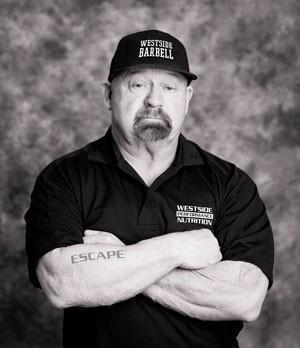BECOMING AN OLYMPIC LEVEL SPRINTER

What is required to be an Olympic level sprinter?
First, one must have a top coach who is capable of teaching proper running form. Next, there needs to be a strength coach that uses a rotation of special exercises to develop the most powerful sprinter possible. It’s common to use a periodization plan consisting of building explosive and speed strength during a weekly plan, along with a max effort day for maximal strength. A lot of hypertrophy work is also added in the precise muscles that are responsible for sprinting: hamstrings, calves, glutes, hips, and the muscles of the torso and back, to maintain proper center of mass.
I feel many make the mistake of using three training periods. The first period is: Accumulation. Here, there is high volume and speed in all movements. These movements should be easy for the athlete to maintain, to develop individually stable speed.
The second period is: Intensification. Now, the athlete moves into sport-specific exercises, directed toward his or her sport. This is where more explosive power and a greater amount of unstable speed development occur. To maintain unstable speed, it requires longer rest periods than time of work.
The third period is: Transformation. This is where the work of the first two periods turns into sport results. At the end of transformation, the highest sport results should be obtained. It lasts for 14-21 days with the highest results possible, followed by 4-6 weeks of detraining, but with low intensity and added volume.
At Westside, we certainly believe in this style of periodization to some extent; however, an athlete cannot take vacations- not even a short one. A pyramid is only as high as its base. The Westside system is a multi-year journey to sports excellence. Track and field has a high injury rate.
This can be resolved by a large base of special exercises that make a nearly indestructible athlete. Hamstring, glute, knee, and foot issues plague sprinters and jumpers. S.P.P. and G.P.P. should be blended together to raise sports results. While a low volume of corrective running and jumping should be continued (about 20%), special exercises must make up 80% of the work. Special exercises will perfect sports technique, making it possible to perform a task to perfection, making it much safer.
Powerwalking with the sled is the Tai Chi of weight training. To build a strong sprinter or jumper, first make long strides with the feet close to the ground, using the heels to pull the body forward. This builds the glutes, hamstrings, hips, and calves. Sixty yards works best for sprinting, as well as the dash in football. Complete eight trips with heavy weight on Monday; reduce weight by 1/3 and add trips (10-15) on Wednesday, then reduce the weight again on Friday. Monday builds absolute strength, and Wednesday strength for dynamic endurance, while Friday is for a warm-up or restoration.
For sprinting technique, stay on the balls of your feet. Sled work can be used for any race length. If you’re a long distance/ marathon runner, get your heart rate up to 190 bmp. The sled work will build great muscular development where it counts. Walking in a belt squat machine with weight around your waist will build your hips and glutes to the highest degree. It’s best to belt squat for a set that equals the length of your event (i.e. 60m- 8 seconds; 100m- 12 seconds, etc.). To build general endurance, do 60 reps per set, with one rep per second for a series of sets, with appropriate rest intervals.
Westside also relies on a non-motorized treadmill for intervals, like power sled walks. Rotate the three to avoid accommodation- special exercises must play a role in sprinting and jumping. Glute-ham raises, inverse curls, reverse hypers, an assortment of ab work, including leg raises for the ab and hip tendons are a few. You must use ankle weights, hand weights, weight vest, kettlebells, and Bulgarian bags for resistance for walking, sprinting, and jumping.
The key elements are speed strength squats on a box. Use a 3-week pendulum wave from 50%-60% percent of a 1RM. Add bands to the bar equaling 25% at the top of the squat with band tension. This adds 75-85% at the top with bar weight and band tension combined. It is a combination of explosive strength and speed strength; the bar speed should be .8-.9m/s, around 18 lifts total.
Follow the squats with speed sumo pulls with 50% bar weight and 30% band tension at lockout for 4 sets of 2 reps, then move on to reverse hypers, glute-hams, or inverse curls. By gripping the bar in the deadlift, you utilize many different movements, as Coach Barry Ross discovered. Next, do 40 resistance jumps twice a week on different height boxes. For restoration, do 200 reps a day on leg curls, using 10 or 20 pound ankle weights. This also builds thicker connective tissue for more storage of kinetic energy, resulting in more rebounding.
This is just a quick summery; look for our GPP and Explosive Power DVD’s,
Louie Simmons
Westside Barbell Rules




